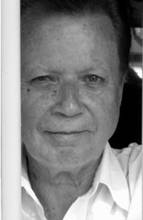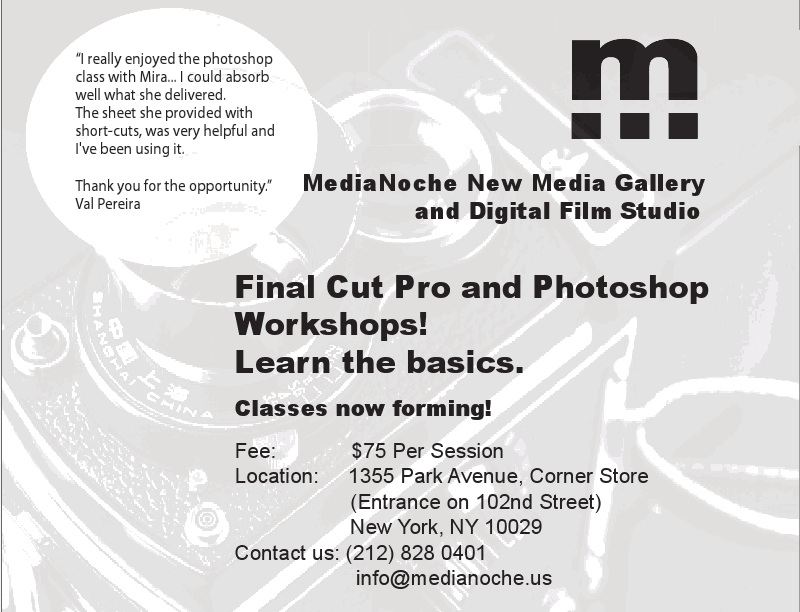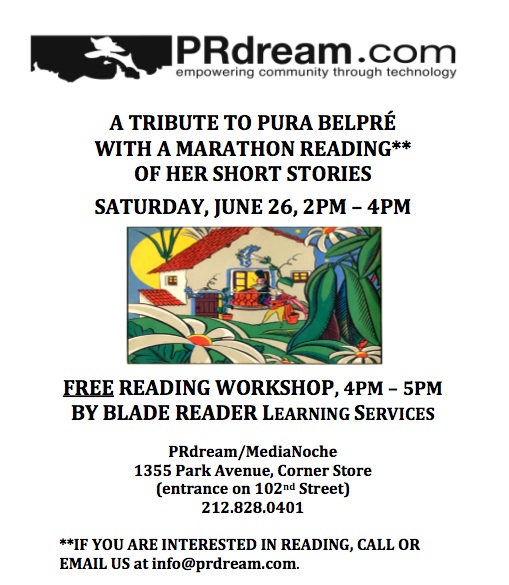by Pedro Vélez
I finally made it! I’ve been honored with a false Facebook profile for my accomplishments in art criticism. What kills me is how utterly uninspired it is, starting with the fact that it uses my real name — I would have preferred a classical pseudonym like Aldiviva Licante, the name attached to a notorious satire of the 18th-century Venetian opera world — and posts its various slanders all across the network using the distinctive Spanglish of Nuyorican boxer Hector “Macho” Camacho.
Pictures of my family and friends complete the jest, among which you can even find my editor Walter Robinson posing candidly with my fiancé and me back in ‘08. “Pedro and his big friends” reads the tag. Apparently, my faux profile has been active since last October and is updated, rain or shine, on a weekly basis. If that isn’t love, then I don’t know what is.
Taken by the late publisher Joel Weinstein (1946-2008), the picture in question brings fond memories; Joel was a dear friend who loved his wife, coffee, and dissecting Puerto Rico’s art scene in his online journal Rotund World. He once was heckled by a subpar dealer who called for his exile, claiming that his writing was harmful to our culture. Sound ridiculous? It sure is, but not uncommon.
You see, ever since the 1940s (that’s when we had our first participatory elections after the U.S. occupation in 1898), politicians have used art to spread nationalist propaganda, and promoted the idea that art should function exclusively in service of the state. As a result, hostility towards critics, thinkers and historians has been institutionalized, embraced by cultural elites who hold onto their official paychecks in government and academia like grim death.
Those types still flip when they hear the name of Marta Traba (1931-1983), the Argentinean critic whose book Polemical Proposal on Puerto Rican Art (1971) rightfully declared our art derivative of its Mexican and North American counterparts. Sometimes they do more than just flip. In the ‘90s Ernesto RuÃz de la Mata (1935-2008), one of our foremost critics, was thrown down the stairs of the now-defunct Leonora Vega Gallery by an angry artist, causing him to lapse into a brief coma and suffer long term health problems.
Amazingly, you can hear people argue that RuÃz de la Mata had it coming because of his line of work. “People who saw it happen didn’t want to talk, and due to that silence Ernesto lost his job as chief critic in the San Juan Star,” comments Yrsa Dávila, friend of RuÃz de la Mata and founding member of 80’s cutting-edge collaborative space MSA Xperimental.
Today, hostility is somewhat polite. Young writers who dare to speak out against the entrenched curatorial elite, like Karla Marie Ostolaza did last year, are quickly reminded by their superiors that it would be best not to “ruffle too many feathers” if they expect to land a teaching job in the future. However exaggerated these stories might sound, imagine how absurd it is to have to live under such conditions every single day. Even though considerable advances have been made in the past decade, change is as necessary as ever, and remains repressed in our extremely politicized country.
The National Survey
In spite of hecklers, it was good to be back visiting Puerto Rico after a year’s absence. My first stop was the 13th and quite possibly final edition of “La Muestra Nacional” (The National Survey), Dec. 9, 2009-Feb. 28, 2010, a large survey of contemporary art held at the Antiguo Arsenal de la Marina Española in Old San Juan. Partly responsible for the demise of this venerable event is the recession — especially catastrophic here — and the decision by Republican governor Luis Fortuño to lay off 36,000-plus governmental workers.
But perhaps more importantly, the government department in charge of “la Muestra,” the Institute of Puerto Rican Culture (founded in 1955 to “protect and preserve our cultural heritage”), was financially drained during the reign of political hack Carmen Ruiz de Fischler. According to El Vocero newspaper, her brief tenure as director doomed federal funding (close to 70 percent of the budget) for regional museums, archeological sites, the school of fne arts, the national archive, historical buildings and many outreach programs.
Apparently, all these responsibilities are now being transferred to local municipalities, which since they are bankrupt have no way to manage or even keep the resources open — private dealers are salivating. Many of us have seen this coming. In addition to this long-term drama, “La Muestra” has had day-to-day problems as well, including complaints of stray cat feces and flooding that damaged artworks.
But you can always look at the art. Overall, my favorite was a large tondo canvas masterfully painted by Nathan Budoff. Large portraits of Hillary and Bill Clinton are surrounded by images as if from their thoughts, with the whole dramatically divided like a yin-yang symbol (her side is bright pink, while his is a dirty blue-brown). Appearing upbeat, maybe even aloof, Hillary seems engulfed by a fantasy of a couple caught in the act of copulating on a kitchen table. Bill, who could be eying the sexy duo himself, seems preoccupied and, for reasons unknown, his background depicts a bearded man (not Kenneth Starr) immersed in his books. Aptly titled Tough Love, Budoff’s incursion into the Clintonian psyche is musty and humorous.
Another work that caught my eye was the fetishistic suite of eight black-and-white photographs by 2002 Whitney Biennial alumnus Javier Cambre. Titled Whorescope, it includes closely cropped images of graffiti on a storefront, a woman’s derriere in a tight skirt, a snail, all suggesting a fragmentary detective narrative of a brothel and sexual obsession that is a throwback to Film Noir and French New Wave cinema. The most iconic photo of the bunch is a woman’s naked torso smeared in black polish.
Other standouts included Carlos Antonio Otero’s black muslin veil, where viewers could enter one at a time and safely peep out at other visitors to the show, and Eric Schroeder’s patterned painting of architectural dioramas. Also compelling was Isabel RamÃrez’ room installation including a huge pile of miniature logs, as if cut from a toy saw mill working overtime, pouring down the side of the room and spreading across the floor, covering a decapitated head — our 35th U.S. president? Hanging from the ceiling is a painting of a ghost child that looks like the famous news photo of three-year-old John F. Kennedy, Jr. saluting the grave of his dead father.
Nina Luis: Timely Anxiety
While in Old San Juan I visited one of my favorite artists, painter Nina Luis, a Puerto Rican based in Miami and on her way to New York. “For this new body of work, I’m soaking it all in, seeking inspiration in this torrid, decadent place,” she told me, pointing out at the colonial cobblestone alleyways visible from her spacious studio. Using a squeegee, Luis shapes impressive abstract blobs, bubbly surfaces and swirls of acrylic paint over large expanses of canvas.
“A few of those anti-depressants are mine, but most come from friends’ cabinets,” she admitted, after noticing my interest in the dozens of empty prescription drug bottles sitting on the floor. “I use them as molds” she said, showing me surfaces littered with smashed paint shapes resembling empty coin rolls and suggesting so many burial caskets — a timely reflection of an island on the verge of a nervous breakdown.
Luis is a painter and can’t hold back, even in a time of economic meltdown: even her smaller works use about ten gallons of paint. Ironically, her brother, megacollector and lobbyist Ramón Luis, specializes in expensive German art. Maybe he should subsidize her new production; this series needs to see the light of day.
Collector Alexis Figueroa
Compared to ultrarich collectors, Alexis Figueroa is the antithesis: he talks with gusto unbounded by etiquette, is a baseball fan, has no interest in buying German art and above all avoids any mention of market value over quality — maybe that’s why artists like him so much. “The little money I have left at the end of the month, instead of buying cars or jewelry, I spend in affordable art, that way I help artists pay their bills,” he tells me, surrounded by portfolios, sketchbooks and all types of memorabilia.
Figueroa is an avid fan of new talents, including the experimental printmaker Omar Velázquez and painter Admin Torres. I was also pleasantly surprised to find a small Mark Kostabi tucked in a corner (a first in the island, for all I know) and one abstract work by Angel Otero. “I bought that when Angel was starting school in Chicago, nobody knew who he was, now I get calls from all the super-collectors, every week, hustling me to give it up,” he tells me, laughing. Currently, Figueroa is helping the respected critic Manuel Alvarez Lezama put the final touches on a book about contemporary artists active in the island, and those in diaspora as well — unbelievably, another first for Puerto Rico.
“Estrictamente No Profesional”
Last on the list was “Estrictamente No Profesional” (Strictly Non-Professional), Jan. 15-Apr. 6, 2010, an apartment show organized by the charismatic artist, art dealer and violinist Raimundo Figueroa (no relation to Alexis). A constant traveler, Figueroa splits his time between New York and St. Barts, visits a number of art fairs around the world (last year he participated in Scope Miami), and is curator of the Arte Foundation, the arts organization in charge of the estate of visionary dealer Luigi Marrozzini (1933-1997). Born in Italy, Marrozzini masterminded the first Biennial of Latin American Prints in San Juan in 1970 (a show that was recently renamed the San Juan Triennial Poly/Gráphica).
Figueroa’s reputation is one for the books: some can’t stand him, others love him, but all agree he has a knack for discovering, developing and supporting young talent. I have known him for several years, but this was the first time he invited me to peruse one of his many art depots. So there I was, surrounded by an awesome array of works by international stars like Jean-Michel Basquiat, Lucio Fontana, Enoc Pérez, Dominique Rousserie.
One cool work by Richard de Gaetano caught my attention for its bright yellow chalky scribbles over a sunflower sun. Figueroa also owns a vast selection of works by the modern Puerto Rican abstractionist Julio Rosado Del Valle (1922-2008), and by hot commodities like graffiti artist Juni Figueroa, which Raimundo tells me he can’t wait to put back on the market.
Over dinner and Ron Cañita (moonshine), Raimundo vented. “It’s going to get worse here for artists before it gets better, and it’s going to take a long time.” He went on, “People who used to buy art, the bankers and developers, are bankrupt, their companies are running on empty.”
After a long day, we finally made it to his spacious beachfront apartment, which is freshened by the sweet smell of the ocean and cool island breezes. On hand was an array of interesting beautiful people, including Lillian Nieves and Arnaldo Roman, editors of Trance LÃquido magazine; local rock star Walter Fernández of the group Ron Calavera; sportswriter Kerry Marshall; photographer Lorean Dolsen; and Miami-based artist Charity Burbridge.
I had the opportunity to chat with photographer (and hot fashion model) Rosalyn Martir about some of her best-known works: the documentation of the rain-induced flooding of the 2008 Triennial Poly/Gráfica, and the subsequent controversy, at El Arsenal de la Marina, the same site that recently housed “La Muestra.” Her pictures of elite fair-goers, soaked and shoeless as they made their way through the puddles, made a splash last year all over Facebook — since the government had reassured everyone that millions were spent fixing the site so that it could be home to such a prestigious international event. “People felt it was poetic justice, it was chaotic and festive at the same time,” Martir told me about opening night.
Figueroa’s art looked good, too. In the spacious kitchen, near a bottle of Johnny Walker Red, was a graphite drawing of lovers embracing into a bestial knot by Francesco Clemente. The intimate, photorealist paintings by Piot Brehmer, depicting nude pubescent girls, raised some eyebrows. Installed adjacent to African masks in the foyer were a group of glossy paintings made over doctored photographs by Carlos Dávila Rinaldi, who employs varied imagery in his work, including Latin Pop icons, abstract motifs, smiling mouths, knives and folkloric phrases and text. I think they are ultracool advertisements for melancholy and other emotions. Also by Rinaldi was a coherent army of freestanding, iron and plastic assemblages that reminded me of John Chamberlain. In addition, the oversized (and hand-drawn) cash-register receipt by Ester Partegàs is an ode to consumption and frugality, very fitting in these times.
In the end, my life as a critic in the island wasn’t that bad when compared to others. All I got, besides my fake Facebook profile, was rotten eggs thrown at my white KIA, anonymous violent messages on my phone threatening my family, and constant harassment at my workplace. Nevertheless, all that drama, comedy and decadence is worth it if revisited during vacation. It helps rejuvenate your inspiration.
PEDRO VÉLEZ is an artist and critic living in Chicago



